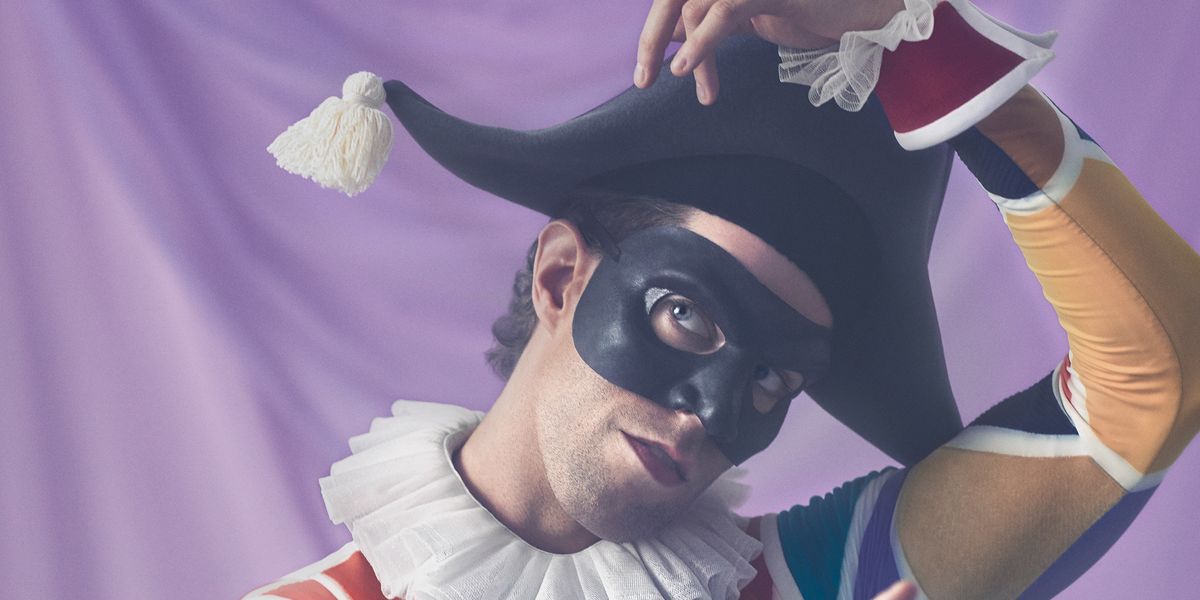With Harlequinade, Alexei Ratmansky Turns His Talents to a Petipa Rarity
It’s no secret that American Ballet Theatre’s artist in residence, Alexei Ratmansky, is obsessed with the choreography of Marius Petipa. Since 2007, he has been involved in reconstructions of several of Petipa’s ballets, starting with Le Corsaire for the Bolshoi and continuing through Paquita (2014), The Sleeping Beauty (2015) and Swan Lake (2016). As Ratmansky said recently, “I believe in Petipa’s choreography—I admire the structure, the changes of mood, all these things that are so brilliantly clear in his choreography.”
Most recently, with the dancers of ABT, he has taken on Harlequinade (originally Les Millions d’Arlequin), a comic ballet created by Petipa in his waning years at the Russian Imperial Ballet. (He was 82 by the time of the premiere in 1900.)
The story is lighthearted: A penniless young man (Harlequin) wants to marry a strong-willed young woman (Columbine), the daughter of the grouchy Cassandre. Cassandre has promised to marry her off to a rich and fatuous older gentleman (Léandre). (There is a clear link to the plot of Don Quixote.) The lovers prevail, aided by a faithful servant (Pierrette) and a Good Fairy.
Petipa drew from the Italian theatrical tradition known as commedia dell’arte, in which stock characters get caught up in messy, even violent, but always funny situations. Each character has his or her way of moving and behaving: Harlequin is always on the move, skittering across the stage with a light-footed run; Columbine is full of pluck.
The ballet appealed to Ratmansky for several reasons. First of all, there was the comic element. “It’s full of fun,” he recently said at a presentation of the ballet, “and I think that humor gives you the freedom to be really free onstage.”
Then there is the music, by Riccardo Drigo, which is melodic and playful, with a lilt that begs to be danced to. (Drigo was a conductor and composer at the Imperial Ballet.) “It’s the best possible ballet music, apart from Tchaikovsky or Stravinsky,” says Ratmansky.
The work’s rarity on ballet stages was also an attraction. There are only two major extant versions of Harlequinade: the one Balanchine made for New York City Ballet in 1965, and a one-act led by the Soviet choreographer Pyotr Gusev, based largely on Fyodor Lopukhov’s 1933 version. (There is also a frequently performed “Harlequinade pas de deux,” but it has no connection to the full ballet.)
Neither the Balanchine nor the Gusev, however, is a “reconstruction” of the original Petipa ballet, which is what this staging aims to be. As with his Sleeping Beauty and his upcoming Bayadère for Staatsballett Berlin (coming this November), Ratmansky has gone back to notations written down in the days when the ballet was being performed at the Imperial Ballet.
Like many of these notations, the ones created for Harlequinade are not easy to decipher, and are incomplete. Where there are gaps, Ratmansky has stepped in, choreographing in a style inspired by Petipa. Rehearsals at ABT have been painstaking but also highly creative, with the dancers occasionally providing ideas for how best to depict their characters, particularly in mime scenes, of which there are many. The costumes and sets, by Robert Perdziola, are inspired by the originals, drawings of which are kept in the St. Petersburg State Museum of Theatre and Music. As with any reconstruction, the archival materials are only a staring point. But in Ratmansky’s view, there is a lot to be learned from living inside the choreography of a past master.




